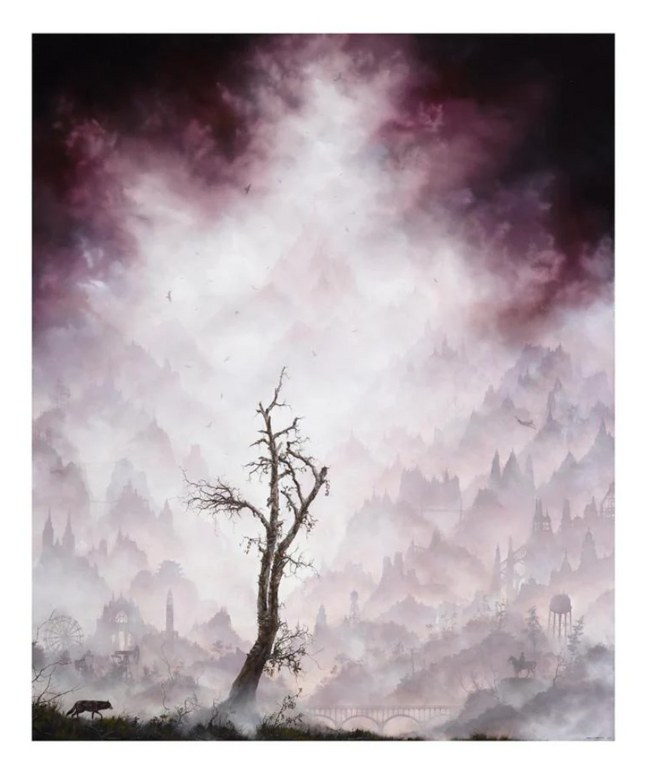
Gray/Grey

Brian Mashburn Kettle AP Giclee Print by Brian Mashburn
Kettle AP Artist Proof Giclee Print by Brian Mashburn Artwork Limited Edition Print on Fine Art Paper Graffiti Pop Street Artist. AP Artist Proof 2018 Signed & Marked AP Limited Edition Artwork Size 16.75x20 Unveiling Kettle AP: A Giclee Masterpiece by Brian Mashburn The fusion of street influences and pop culture references in art has culminated in unique forms like Street Pop Art and graffiti Artwork. "Kettle AP" by Brian Mashburn is a quintessential Artist Proof giclee print that is a testament to this blend. Released in 2018, this limited edition piece is a vital part of Mashburn's oeuvre, known for its nuanced interplay of urbanity with pastoral and industrial elements. Each Artist Proof is an integral part of the printing process, intended to ensure the quality of the print before the complete edition is produced, and is marked 'AP' to denote its status as proof. Distinct Signatures of Kettle AP Collectors of Street Pop Art and graffiti Artwork often seek authenticity and direct artist engagement. "Kettle AP" meets this demand with Brian Mashburn's signature, a hallmark of originality and a direct connection to the artist's hand. The significance of Mashburn's autograph goes beyond mere certification; it represents a bridge between the creator and the collector, a shared moment captured on the fine art paper that serves as the substrate for this stunning giclee print. The Artistic Dimensions of Kettle AP Measuring 16.75x20 inches, "Kettle AP" is a substantial work that offers a commanding presence. Its dimensions are carefully chosen to ensure that the intricate strokes, delicate hues, and overall composition are presented with the impact that Mashburn intended. The print's size is aesthetically pleasing and practical, allowing for versatility in display settings, from intimate home environments to more expansive galleries. Cultural Resonance in Street Pop Art & Graffiti Artwork Brian Mashburn's "Kettle AP" is not just a visual treat but also a cultural artifact that captures the zeitgeist of the modern urban landscape. His work often depicts a world where nature and human-made structures coexist, sometimes in harmony, sometimes in tension. Like much of his work, this print invites contemplation on the interplay between different elements within the frame, asking the viewer to ponder the relationship between the environment and the built world. Investing in Limited Edition Prints The allure of limited edition works like "Kettle AP" lies in their unique position in the art market. They offer an accessible entry point for new collectors while holding value for seasoned art investors. The rarity of an Artist's Proof, especially one signed and approved by the artist, adds to its desirability. Over time, such works can become even more valuable, as they are sought after by collectors for their artistic merit and potential as an investment. Impact and Legacy of Kettle AP "Kettle AP" is a significant piece within the landscape of Street Pop Art and graffiti Artwork. Its limited edition nature, the artist's endorsement, and its reflection of contemporary themes contribute to its enduring significance. The artwork transcends its role as a decorative object to become a statement of Brian Mashburn's vision, a snapshot of the era it was created, and a lasting piece of cultural commentary that will continue to resonate with audiences for years.
$432.00


